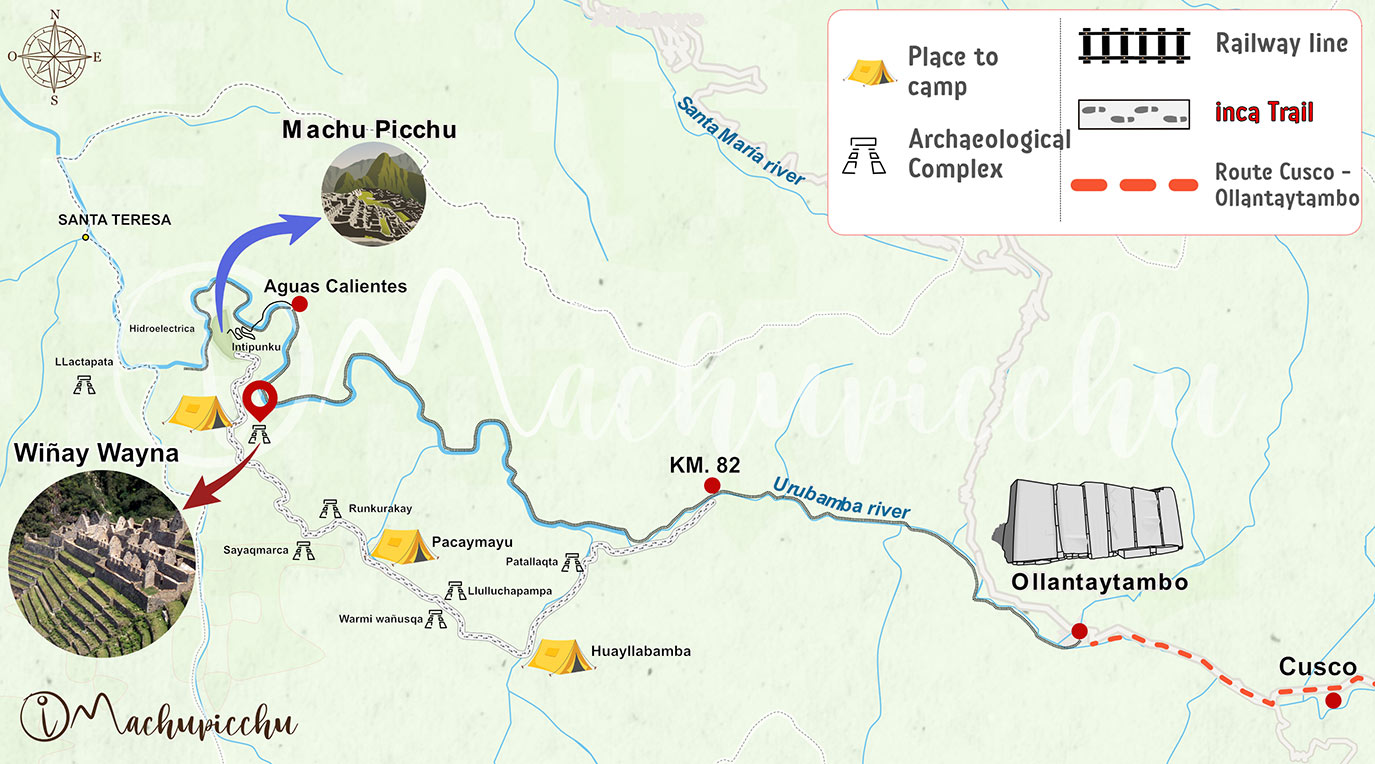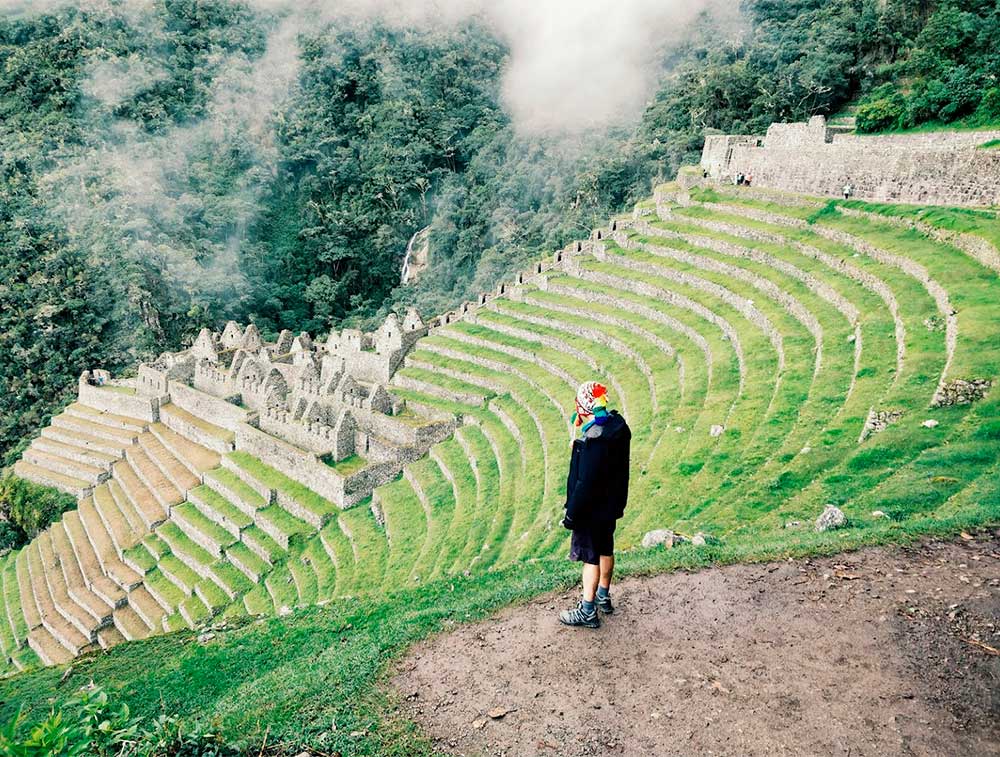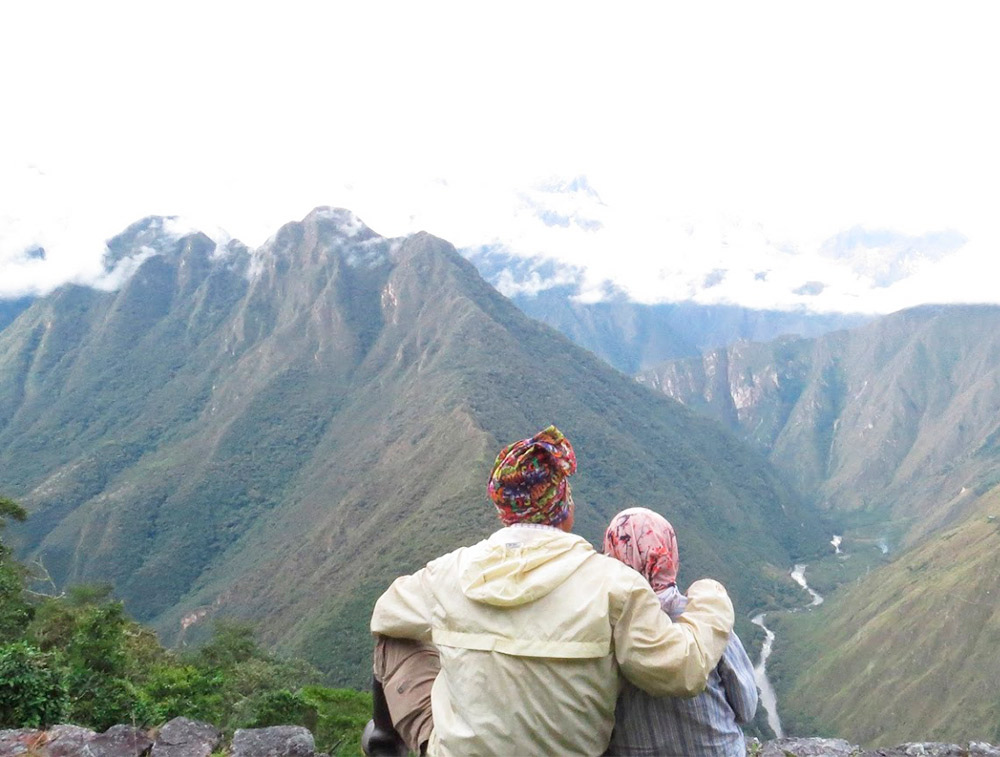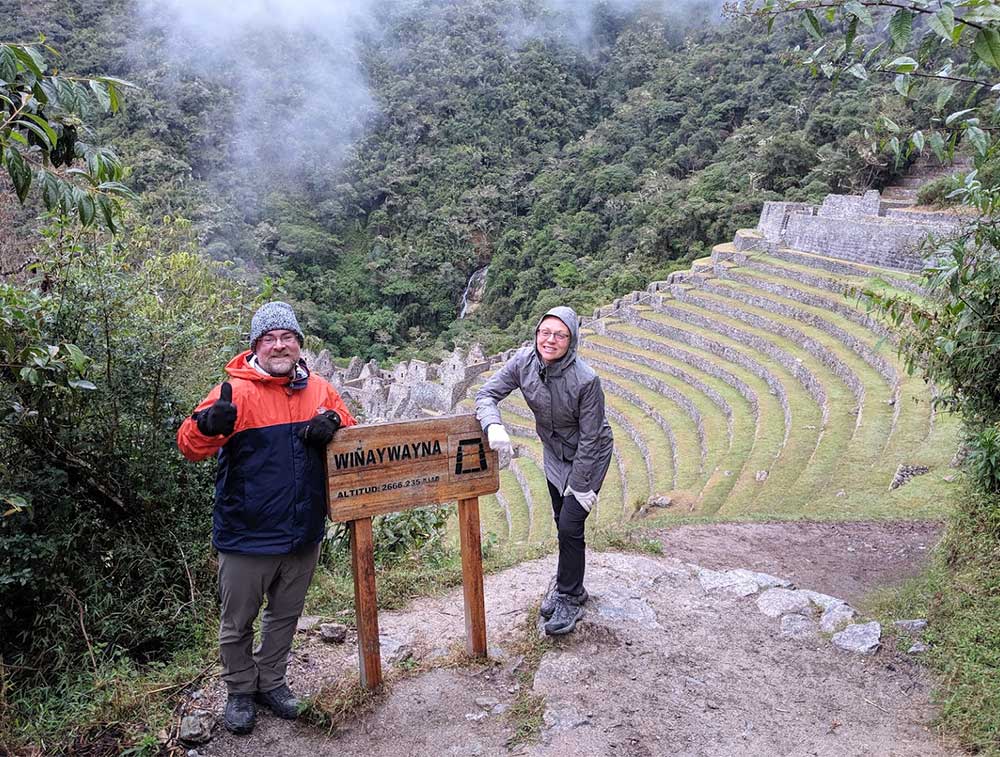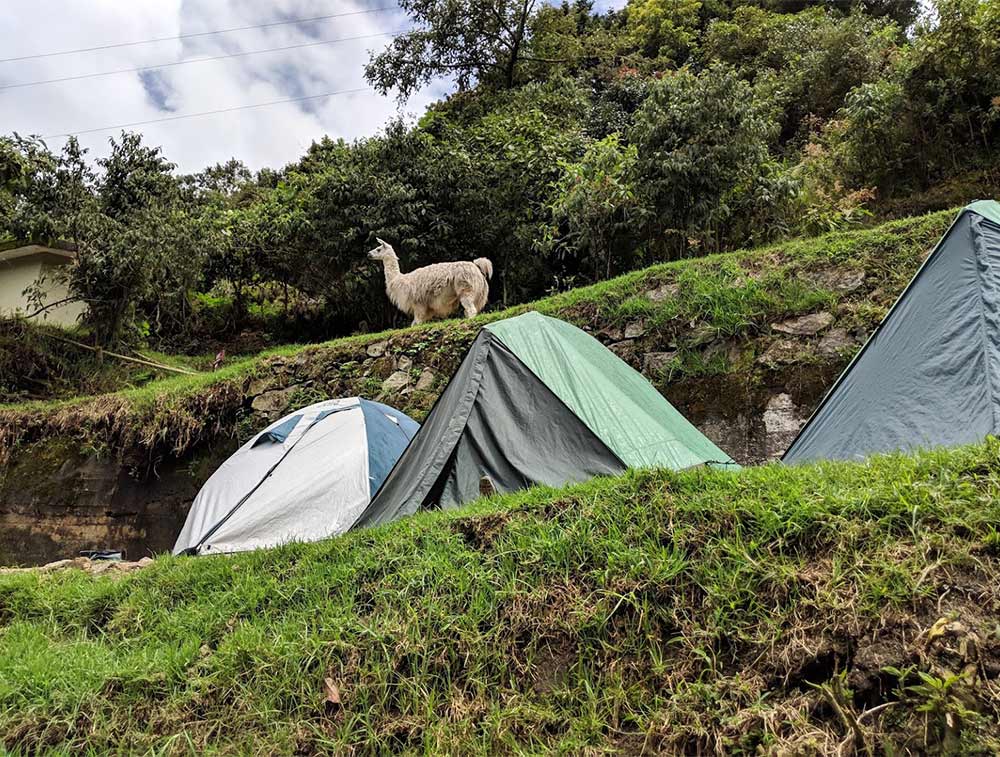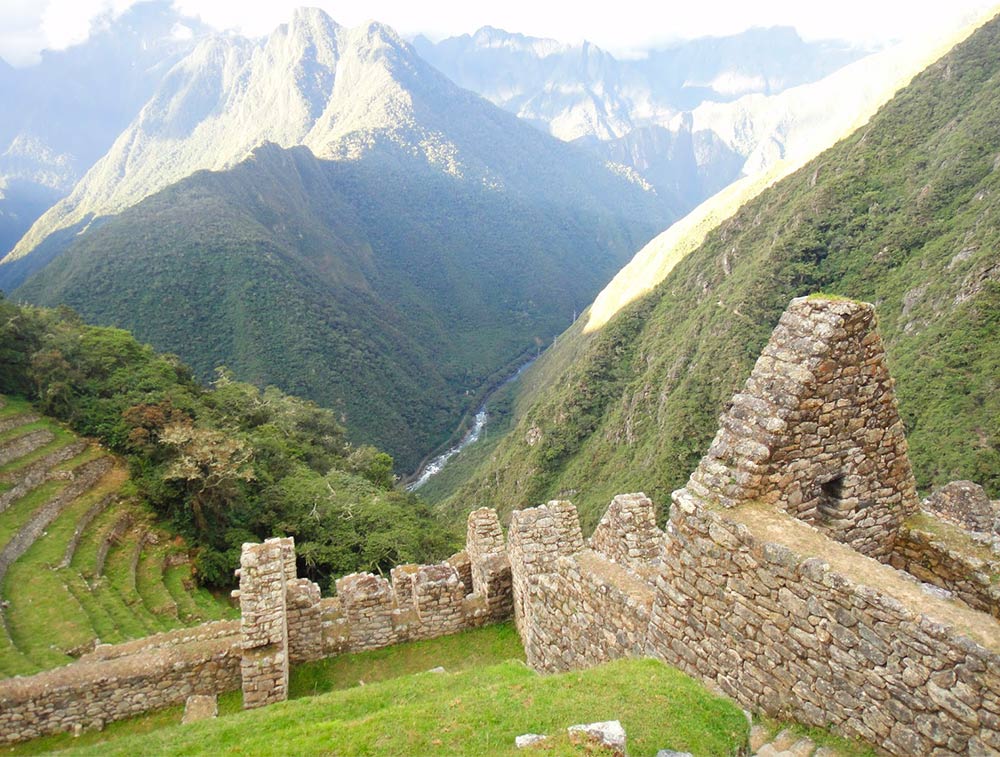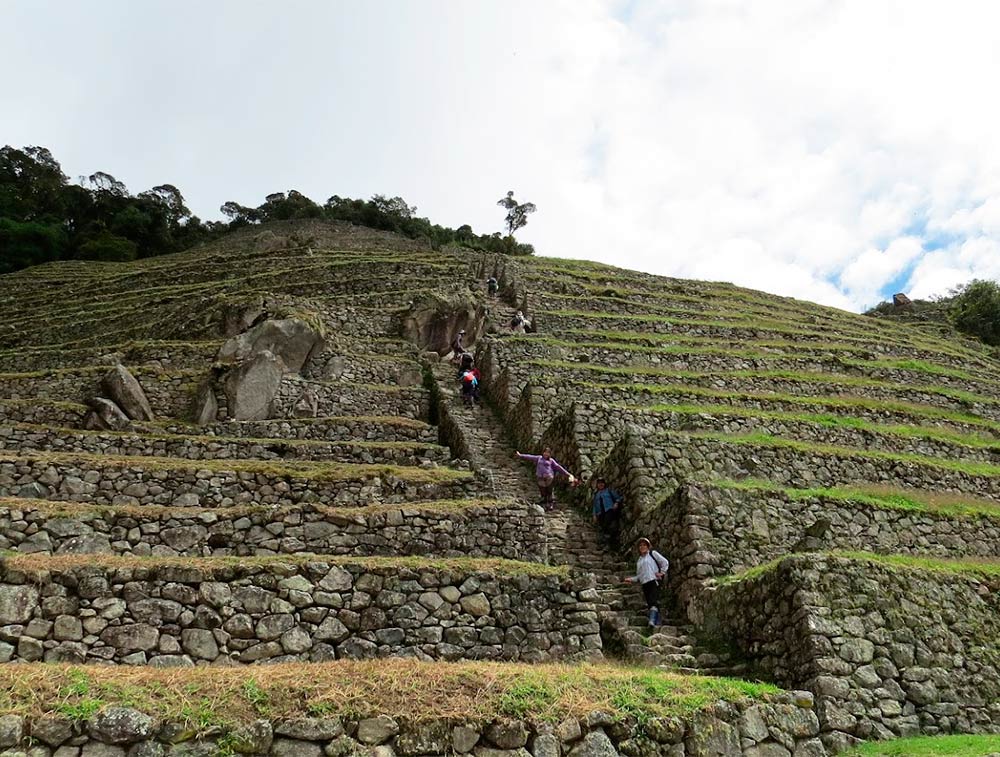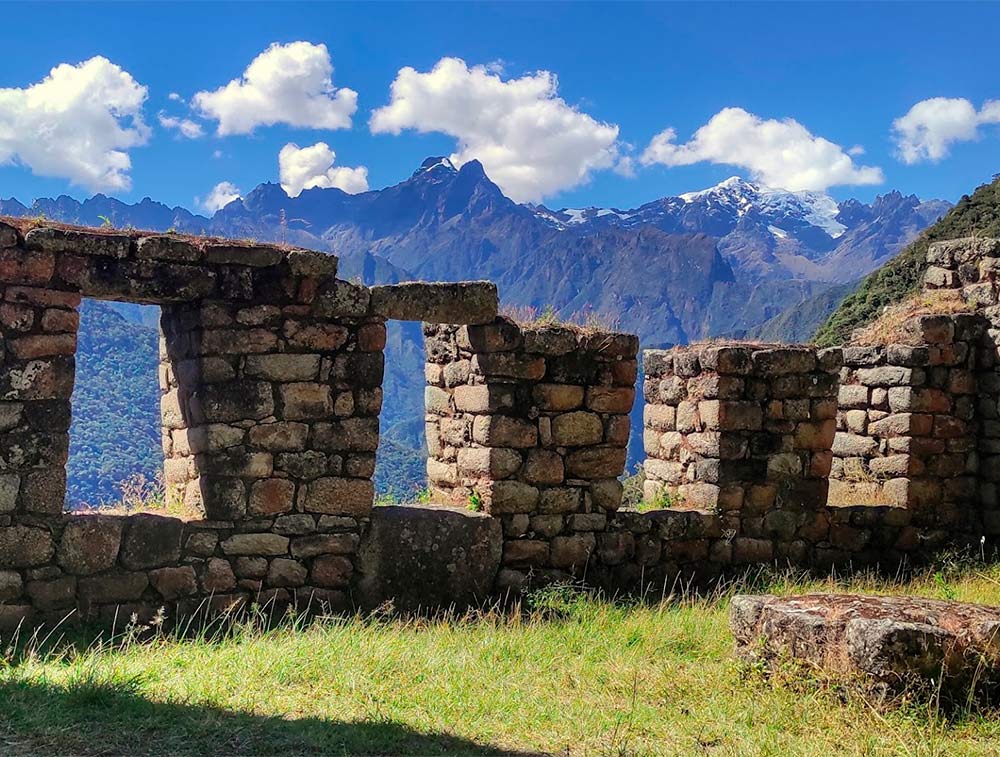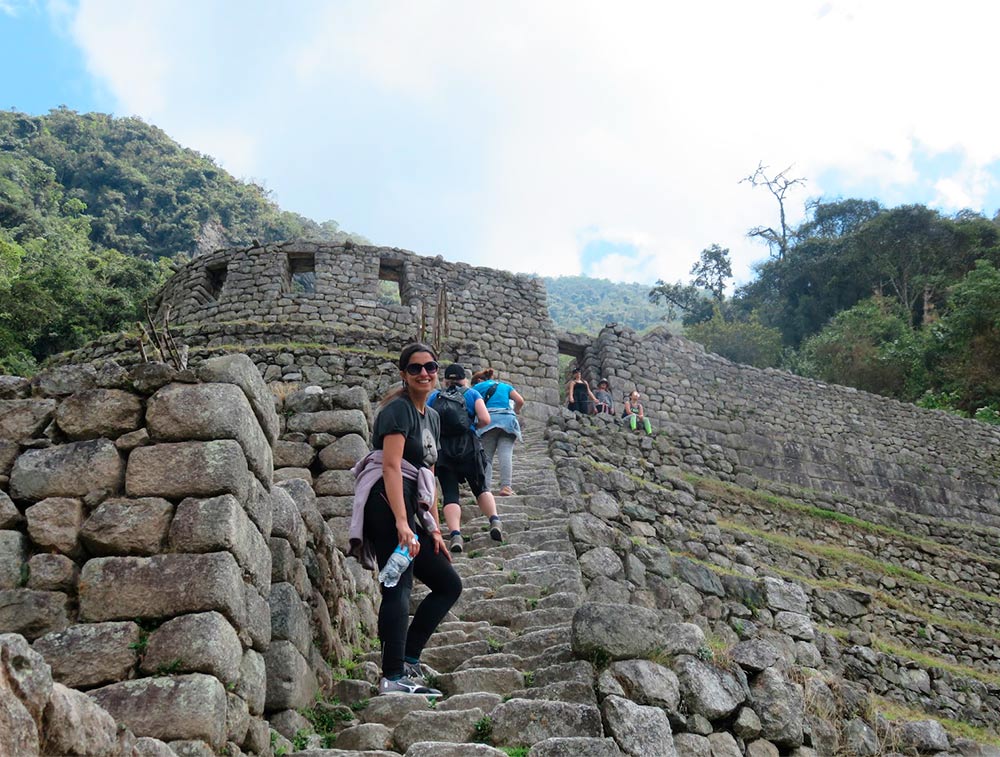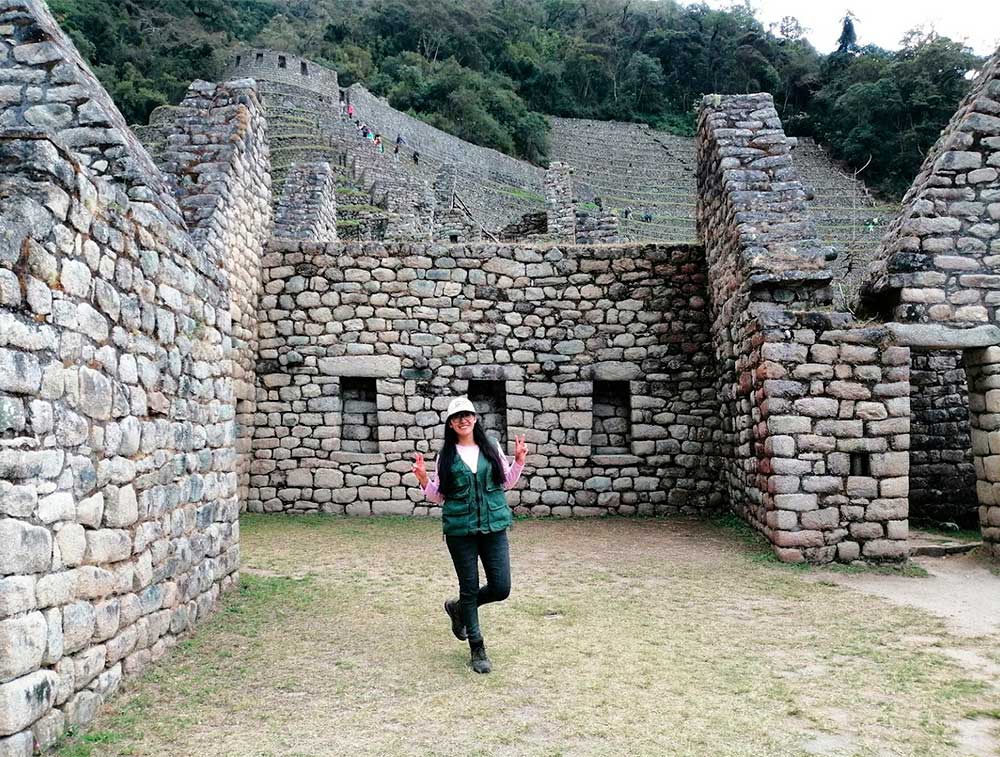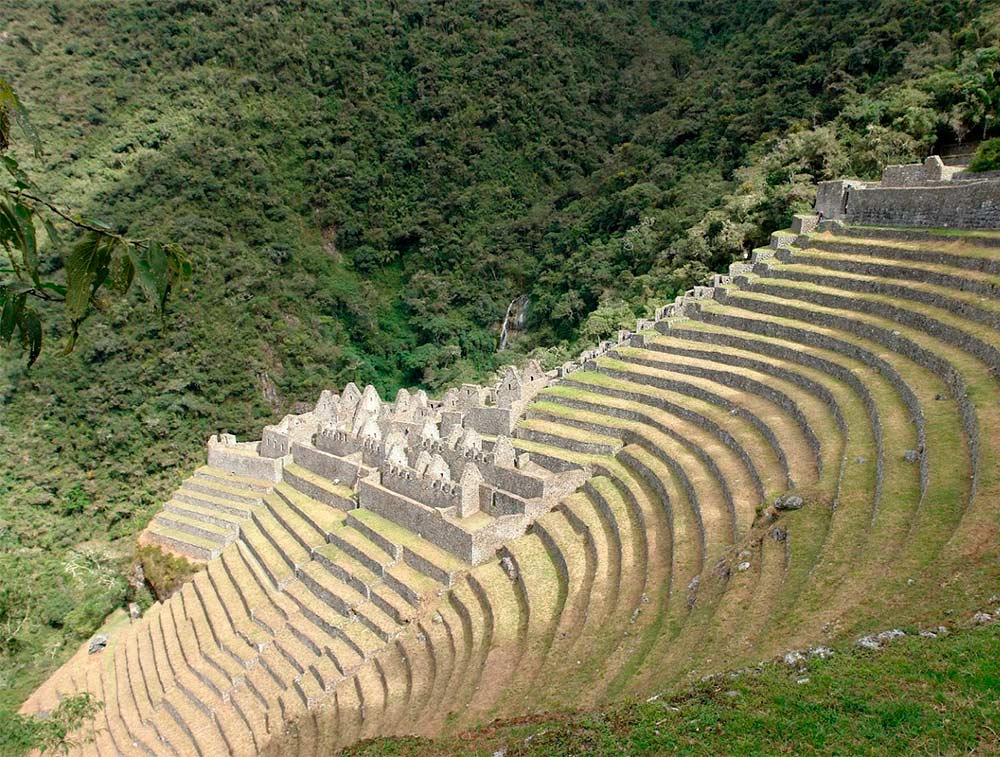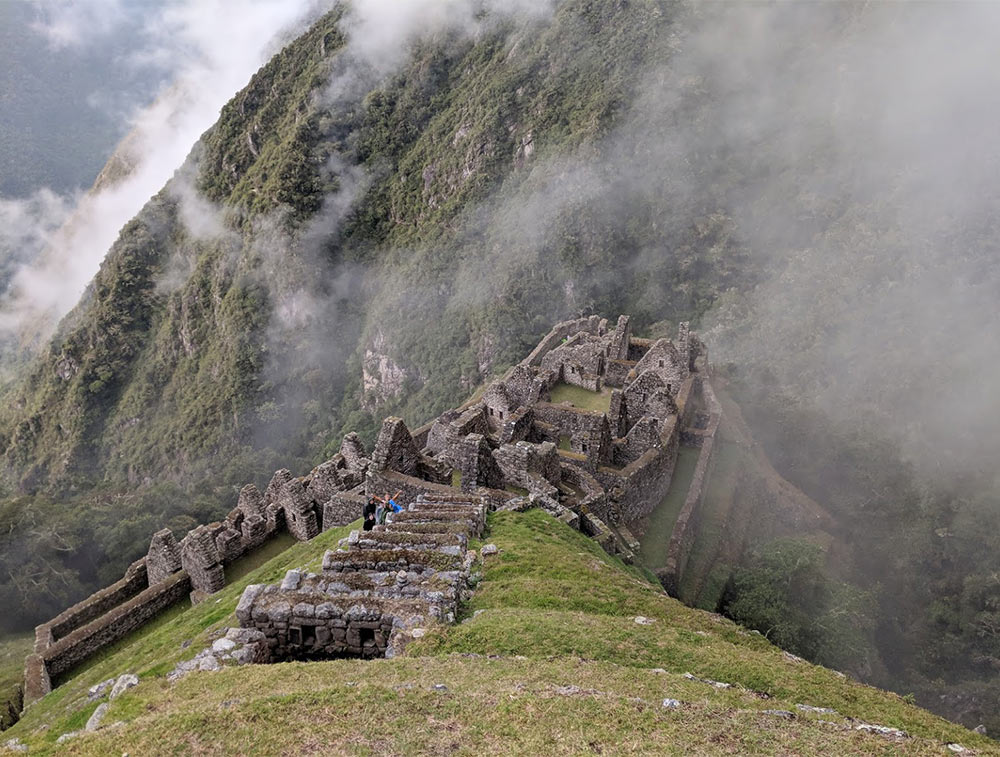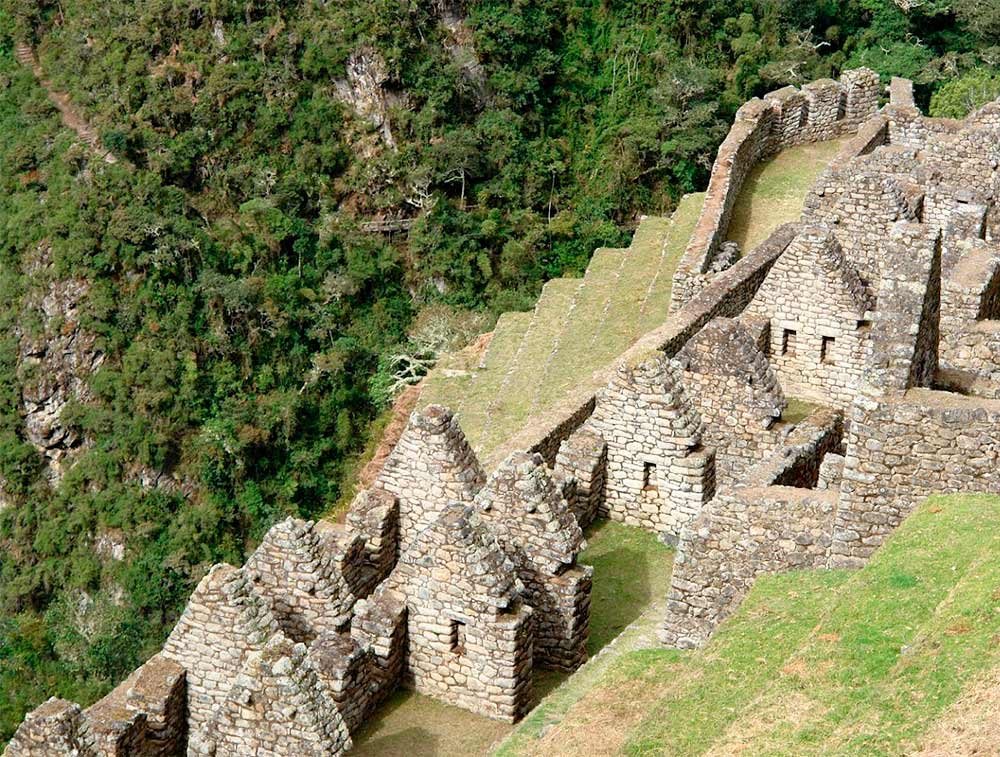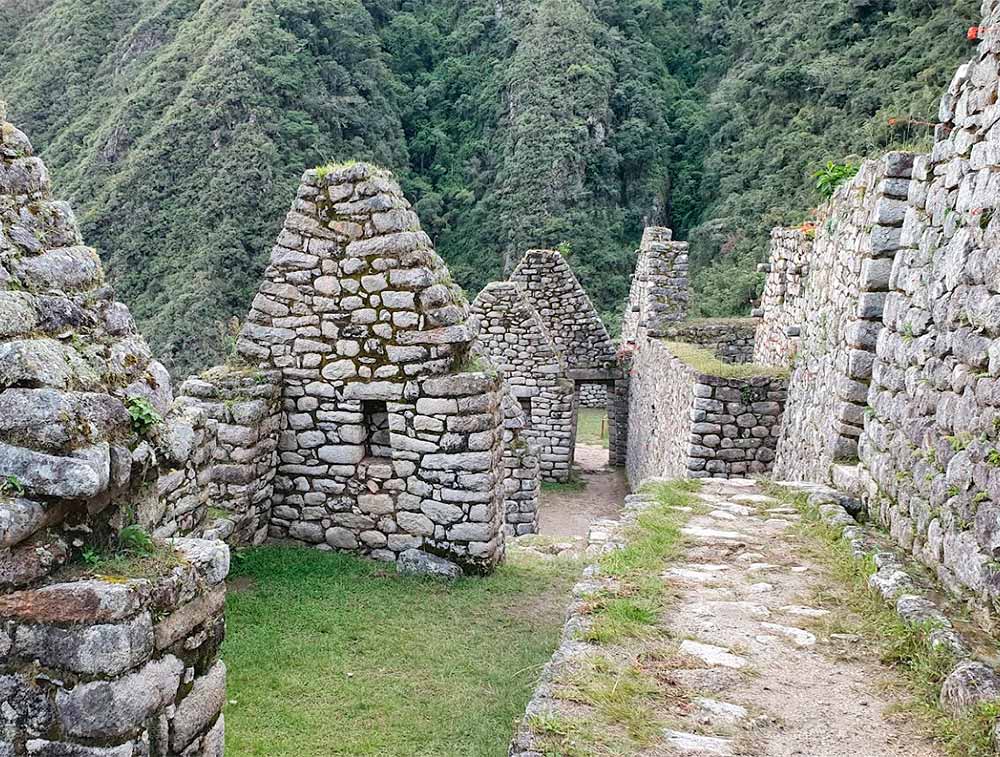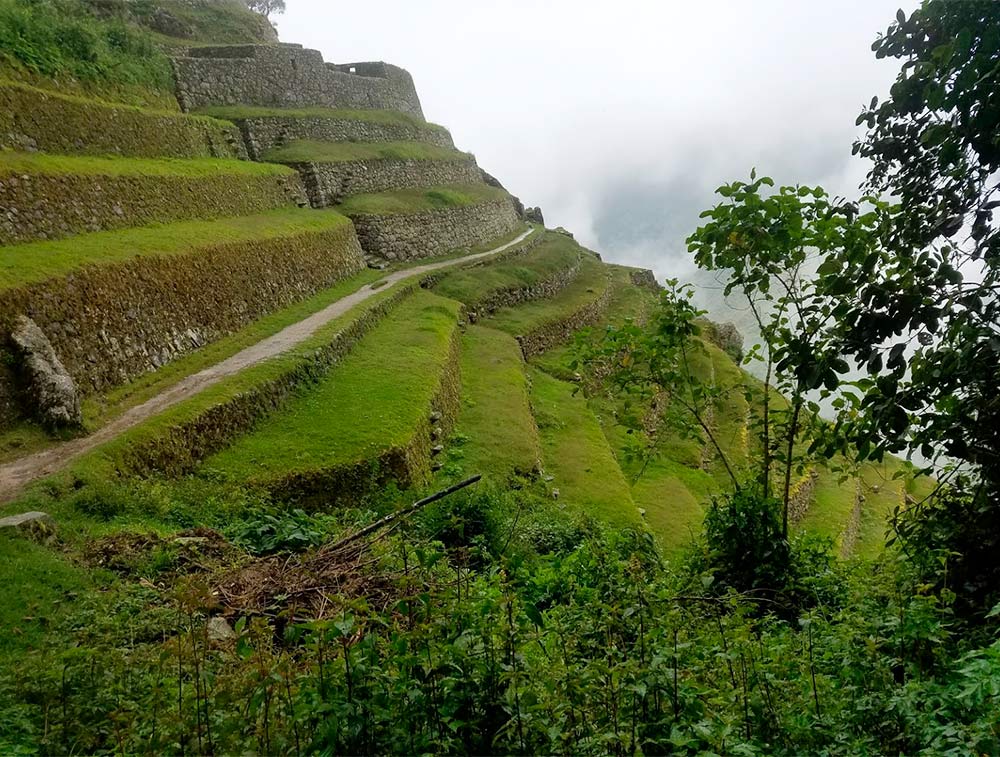Inca site of Wiñayhuayna
The Inca site of Wiñayhuayna is one of the Inca sites less known by tourists. Even so, it is one of the most formidable constructions, both for its beautiful landscape and for its stone architecture. It is located just 5 kilometers on foot from Machu Picchu. To get there you must do the Inca Trail, either the classic version of 4 days or the short version of only 2 days.
- Wiñayhuayna, forever young
- Where is it?
- How to get there?
- Map to get to Wiñayhuayna
- How to get from Wiñayhuayna to Machu Picchu?
- History
- Constructions of Wiñayhuayna
- The Inca Trail and Wiñayhuayna
- Photos
- Price of the visit
- More information
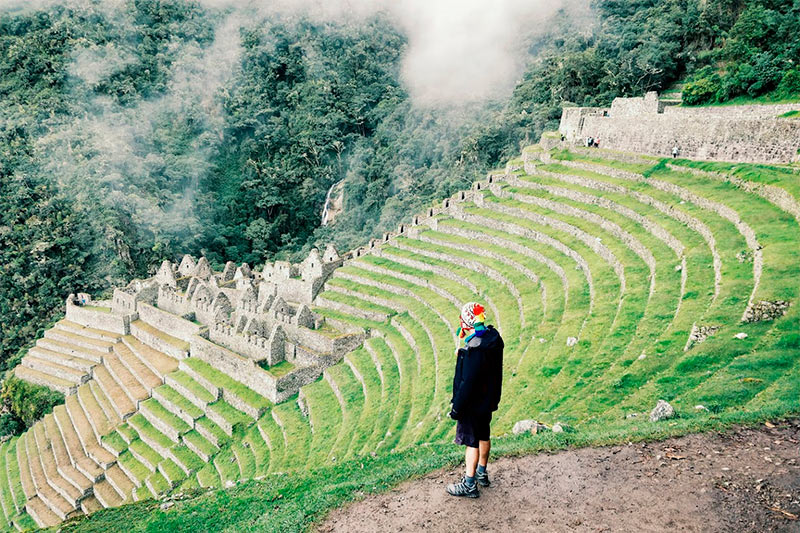
Archaeological center of Wiñayhuayna
Wiñayhuayna, forever young
- Wiñayhuayna is a Quechua word that means ‘forever young’ or ‘eternally young’. The reason? An orchid with the same name abounds in the place. It is estimated that in the area around Machu Picchu and Wiñayhuayna there are more than 300 species of this flower.
- It is an Inca citadel where agricultural products were grown on its huge platforms. Also there are smaller enclosures (for the common population), larger enclosures (for the nobility) and temples where the sun, mountains, stars and other Inca gods were worshiped.
- Like all the main Inca citadels, Wiñayhuayna is made of granite stone. Its streets, stairs and squares (courts) have an organization similar to Machu Picchu. Both citadels are connected by the royal Inca roads (the qhapac ñan). Its function was to provide food to Cusco, establish the limits and power of the Inca empire as well as function as a palace or resting place for emperors and royalty.
- Today it is one of the most formidable archaeological sites in Cusco. Due to its difficult location on top of a mountain, it can only be visited through the Inca Trail (a hiking route purchased with a tourism agency). Few visitors have seen Wiñayhuayna.
Where is it?
- The archaeological site of Wiñayhuayna is located just 5 kilometers on foot from Machu Picchu. From the city of Cusco there is a distance of 72 kilometers in a straight line.
- Geographically it is located in the Urubamba valley and the Vilcabamba mountain range. It is on a steep hillside belonging to the Historic Sanctuary of Machu Picchu. It is located 2,650 meters above sea level.
How to get there?
Getting to Wiñayhuayna is not easy. To get there you must do the following:
Inca Trail 4 days:
- To get to Wiñayhuayna from the starting point of the 4-day Inca Trail (at kilometer 82 of the railroad) you must go on foot along Inca trails up to 35 kilometers.
- On the fourth and last day of the trek, you will go through Wiñayhuayna. That same day Machu Picchu is visited.
- It is not possible to visit Wiñayhuayna in isolation, without doing this hiking route.
Inca Trail 2 days:
- To get to Wiñayhuayna from the starting point of the 2-day Inca Trail (at kilometer 104 of the railway) you must go uphill on Inca trails for approximately 6 kilometers.
- The first day, after 2 or 3 hours of walking, you arrive at Wiñayhuayna. That same day he also arrived at Machu Picchu.
- It is not possible to visit Wiñayhuayna in isolation, without doing this hiking route.
Map to get to Wiñayhuayna
How to get from Wiñayhuayna to Machu Picchu?
- Wiñayhuayna is only 5 kilometers walk from Machu Picchu. To get there you must walk along the main trails of the ‘qhapac ñan’, the Inca trails. The walk takes 1 hour 30 minutes on average. At the end you will arrive at Intipunku (the Sun Gate), from where you have a first impressive landscape view of the entire place. Then you must continue walking for 40 minutes to arrive at the archaeological sector of Machupicchu.
History
- Wiñayhuayna was discovered in 1941 by the Hungarian-American researcher and filmmaker Paul Fejos. However, it was the Peruvian archaeologist Julio C. Tello who managed to investigate the site in depth and who baptized it with the name of the Wiñayhuayna orchid flower.
- In Inca times Wiñayhuayna was a citadel that was part of a network of similar cities such as Llactapata, Runkurakay, Sayacmarca, Phuyupatamarca, Intipata, Machu Picchu and more. The Incas built an immense network of Inca roads, the Qhapac ñan, to communicate all these sites with Cusco, the capital.
- Research suggests that Wiñayhuayna was built in the 15th century on the orders of Emperor Pachacutec. As happened with Machu Picchu, during the Vilcabamba wars in the 16th century (between the Spanish and the Incas) Wiñayhuayna was gradually abandoned. The thick vegetation covered it in oblivion for several centuries until its ‘rediscovery’ in 1941.
- Today Wiñayhuayna is an archaeological site protected by the Ministry of Culture of Peru. Due to its importance and historical value (it is part of the Qhapac ñan) the only way to visit it is through the Inca Trail for 4 or 2 days.
Constructions of Wiñayhuayna
These are the most outstanding constructions of Wiñayhuayna:
- Set of platforms – Visually, what stands out the most in Wiñayhuayna are its huge terraces where the Incas grew products such as corn, coca leaves and more. The platforms are present in both the upper and lower sectors of the citadel. Up to 40 levels of terraces can be counted.
- The tower – The most admirable construction of Wiñayhuayna is its tower, a semicircular temple where seven trapezoidal windows are distinguished with spectacular views of the mountains. It is located in the upper sector of the place. There religious ceremonies were performed to the mountains and the sun.
- The ritual fountains – On one side of the tower, ascending some stairs, there is a set of ten water fountains for religious purposes. There the Incas performed ‘purification’ ceremonies. Water channels fill each of these ten enclosures. Similar constructions exist in the archaeological site of Ollantaytambo.
- The Inca Enclosure – In the upper area of Wiñayhuayna there is a set of enclosures that, due to their ample space and remarkable carving, would have served as the Inca emperor’s enclosure. There are niches, windows, squares, small enclosures, water channels and doors.
The Inca Trail and Wiñayhuayna
- Wiñayhuayna is crossed by a part of the famous qhapac ñan, the Inca roads that connected the city of Cusco with the rest of the empire along more than 30 thousand kilometers of roads.
- A short section of these Inca trails (5 kilometers) is the one that connects Wiñayhuayna with Machu Picchu. Currently these roads are considered Cultural Heritage of Humanity by Unesco.
- When Wiñayhuayna is located in an inaccessible place (there are no direct roads) and close to this network of Inca trails, the only way to visit it is by buying an ‘Inca Trail’ tour through a Cusco tourism agency.
- The tours allow you to travel the Inca trails, get to know Wiñayhuayna as well as other Inca archaeological sites on the route. In the end, nothing less than Machu Picchu is reached.
Price of the visit
- The 4-day Inca Trail tour has an approximate cost of 620 US dollars per tourist.
- The 2-day Inca Trail tour has an approximate cost of 500 US dollars per tourist.
More information
- Very close to Wiñayhuayna there is a camp. Tourists on the 4-day Inca Trail spend their third night there. So the next day they can get to know Wiñayhuayna and Machu Picchu at the end of their adventure.
- The climate in Wiñayhuayna is temperate with a lot of humidity and cloudiness in the mornings. During the visit it is recommended to wear a windbreaker jacket. Rains are most common from November to April. May to October is the dry season, when less rainfall occurs during the day.
By Ticket Machu Picchu – Last updated, August 15, 2024
